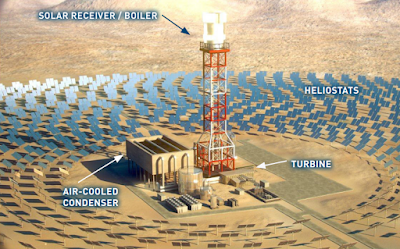Pattern Energy’s Spring Valley Wind Farm, on BLM land at the intersection of US 50 and 93, is Nevada’s first wind-generated electricity production facility. The 152 MW facility comprises 66 2.3 MW Siemens turbines. It began commercial operation August 2012.
That’s pretty much all there is to tell. But I had to snap a photo. Not only is it a gorgeous location, but every time I see windmills on a ridge, a concentrated solar power (CSP) plant, or any kind of alternative energy facility, it fills me with hope.
Politically, the USA is torn about our energy future and the future of our nation and the world under Global Warming. The Republican party as a whole rejects scientific consensus, which just boggles my mind. As the late U.S. Senator Daniel Patrick Moynihan said, “You’re entitled to your own opinions. You’re not entitled to your own facts.”
Yet even while all this controversy continues, alternative energy is springing up all over the country. In my travels, I not only see the large facilities, but I see ranches and farms with their own alternative energy power. I see more suburban houses with photovoltaic panels on the roof. There is more and more of the right technology.
I don’t have the eagleeye view on whether this is enough to curb the worst outcomes of Global Warming, but it gives me hope. And it makes me proud to be an American.







